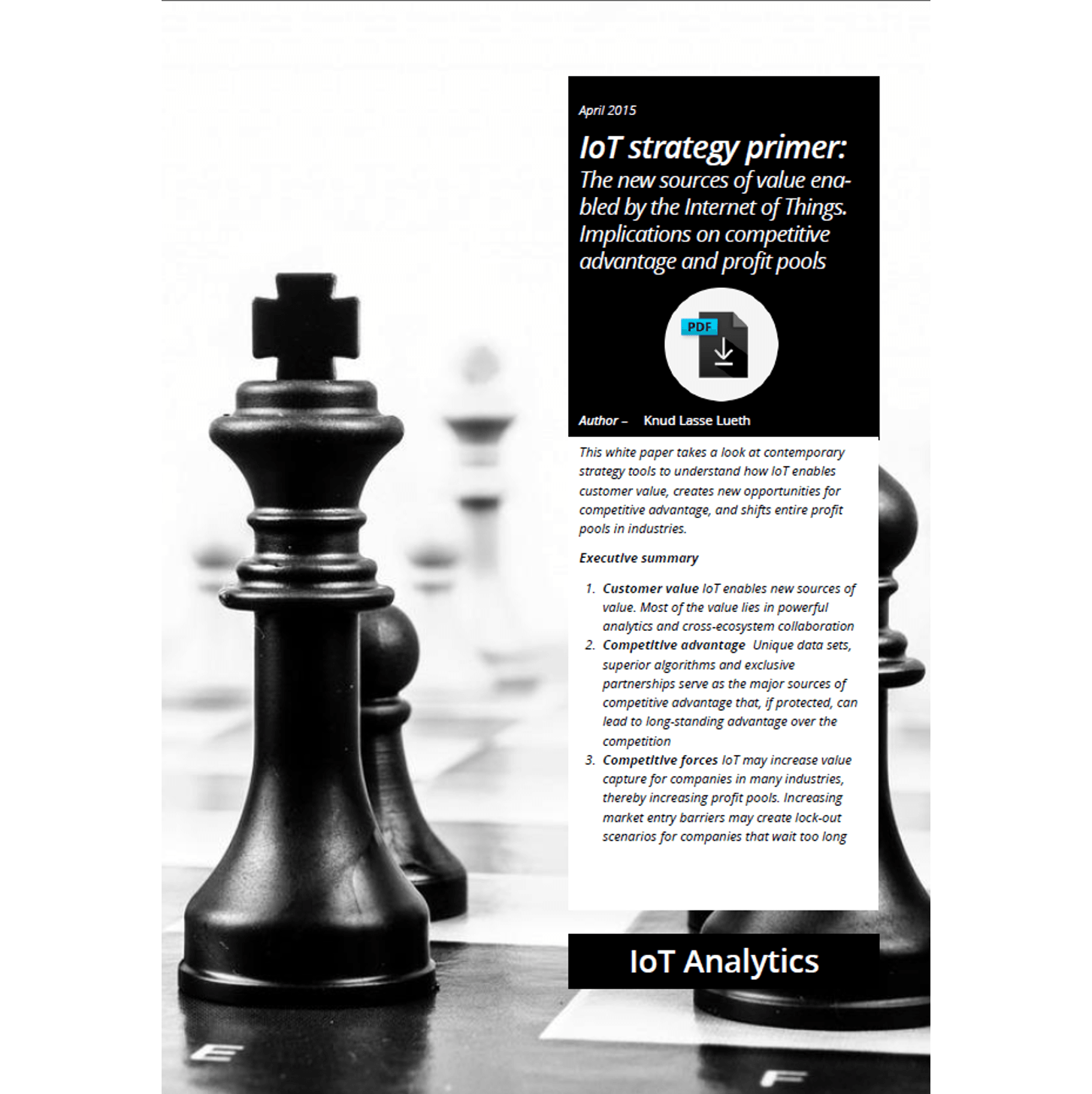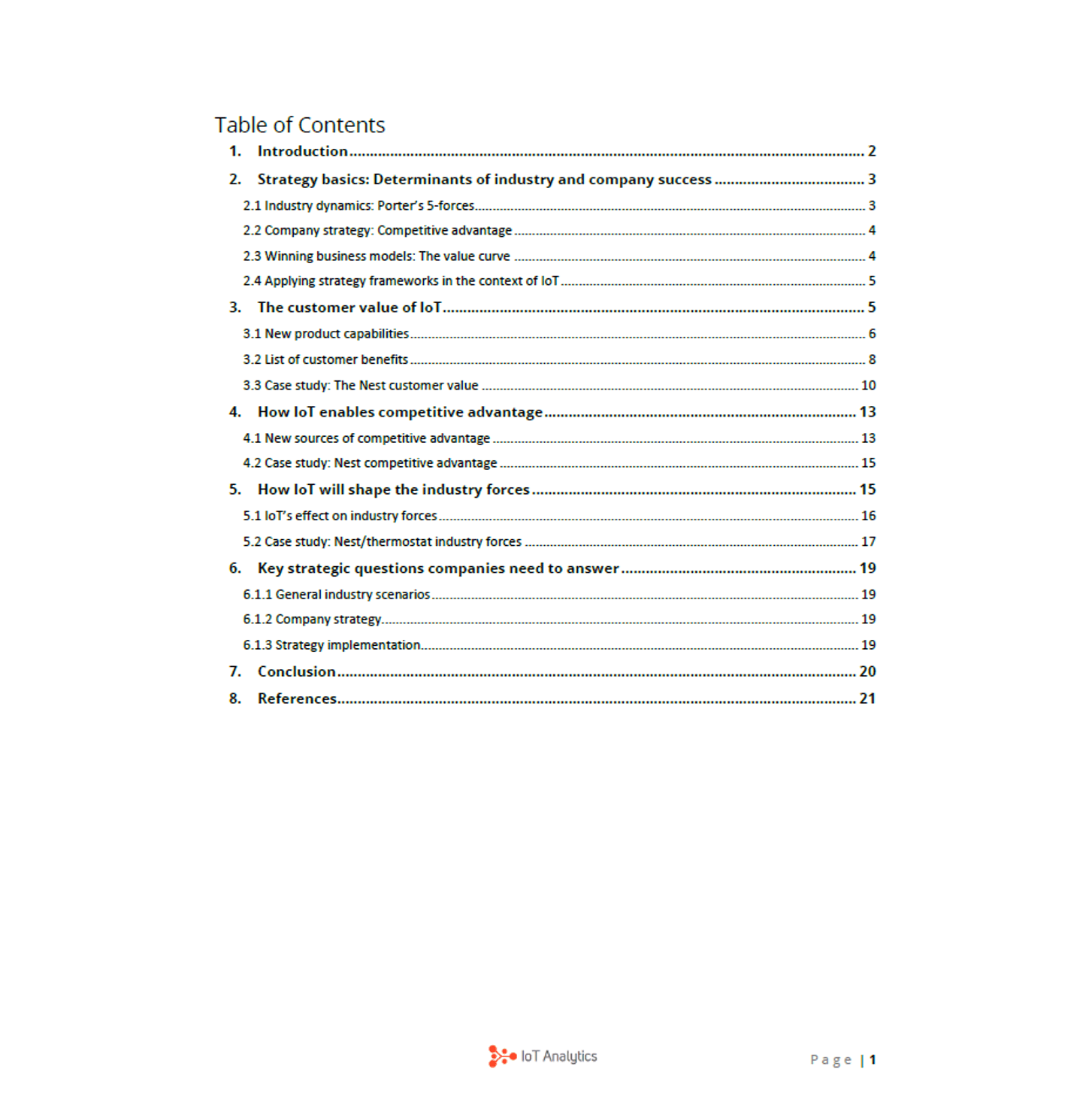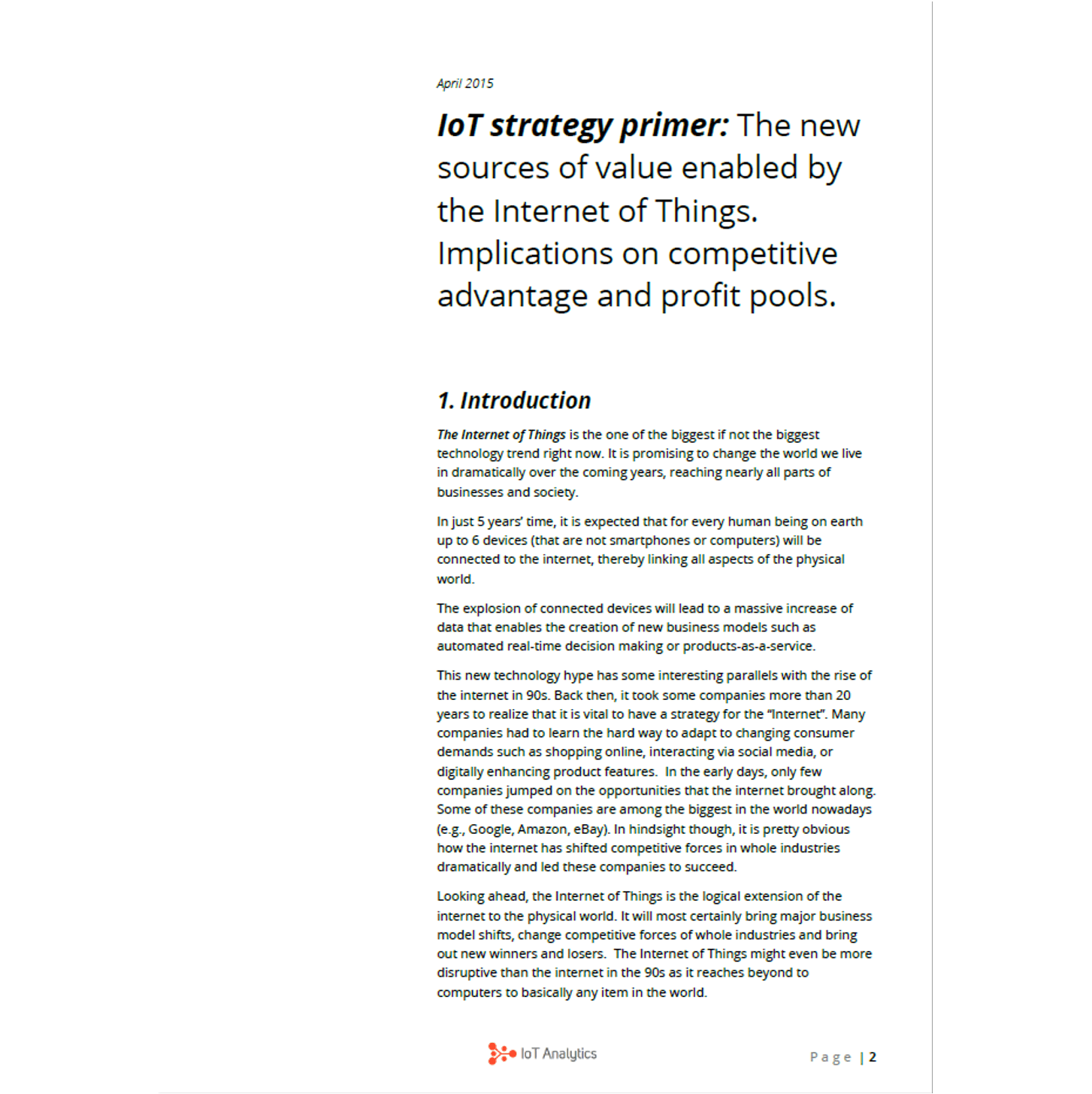Description
IoT strategy primer
The new sources of value enabled by the Internet of Things. Implications on competitive advantage and profit pools.
This white paper takes a look at contemporary strategy tools to understand how IoT strategy enables customer value, creates new opportunities for competitive advantage, and shifts entire profit pools in industries.
Executive summary of the IoT strategy primer:
- Customer value IoT enables new sources of value. Most of the value lies in powerful analytics and cross-ecosystem collaboration
- Competitive advantage Unique data sets, superior algorithms and exclusive partnerships serve as the major sources of competitive advantage that, if protected, can lead to long-standing advantage over the competition
- Competitive forces IoT may increase value capture for companies in many industries, thereby increasing profit pools. Increasing market entry barriers may create lock-out scenarios for companies that wait too long
Table of Contents
1. Introduction to IoT strategy 2
2. Strategy basics: Determinants of industry and company success 3
2.1 Industry dynamics: Porter’s 5-forces 3
2.2 Company strategy: Competitive advantage 4
2.3 Winning business models: The value curve 4
2.4 Applying strategy frameworks in the context of IoT 5
3. The customer value of IoT 5
3.1 New product capabilities 6
3.2 List of customer benefits 8
3.3 Case study: The Nest customer value 10
4. How IoT enables competitive advantage 13
4.1 New sources of competitive advantage 13
4.2 Case study: Nest competitive advantage 15
5. How IoT will shape the industry forces 15
5.1 IoT’s effect on industry forces 16
5.2 Case study: Nest/thermostat industry forces 17
6. Key strategic questions companies need to answer 19
6.1.1 General industry scenarios 19
6.1.2 Company IoT strategy 19
6.1.3 IoT strategy implementation 19
7. Conclusion 20
8. References 21
Introduction to the IoT strategy primer:
The Internet of Things is the one of the biggest if not the biggest technology trend right now. It is promising to change the world we live in dramatically over the coming years, reaching nearly all parts of businesses and society.
In just 5 years’ time, it is expected that for every human being on earth up to 6 devices (that are not smartphones or computers) will be connected to the internet, thereby linking all aspects of the physical world.
The explosion of connected devices will lead to a massive increase of data that enables the creation of new business models such as automated real-time decision making or products-as-a-service.
This new technology hype has some interesting parallels with the rise of the internet in 90s. Back then, it took some companies more than 20 years to realize that it is vital to have a strategy for the “Internet”. Many companies had to learn the hard way to adapt to changing consumer demands such as shopping online, interacting via social media, or digitally enhancing product features. In the early days, only few companies jumped on the opportunities that the internet brought along. Some of these companies are among the biggest in the world nowadays (e.g., Google, Amazon, eBay). In hindsight though, it is pretty obvious how the internet has shifted competitive forces in whole industries dramatically and led these companies to succeed.
Looking ahead, the Internet of Things is the logical extension of the internet to the physical world. It will most certainly bring major business model shifts, change competitive forces of whole industries and bring out new winners and losers. The Internet of Things might even be more disruptive than the internet in the 90s as it reaches beyond to computers to basically any item in the world.
Companies need to be aware how this technology shift will impact their industry over the coming years. There are still plenty of possibilities to create early-mover advantage to lead this technology disruption. However, as will be discussed further on in this paper, IoT will change competitive forces in some industries such that it creates new barriers of entry so that companies that wait too long to create connected devices and subsequent data-driven business models get locked-out and eventually run the risk to lose their existence.
That is why every company needs an IoT strategy now.




